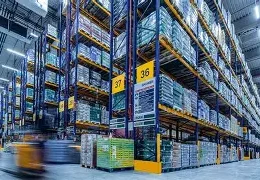Introduction
With the global demand for animal protein on the rise, the livestock industry is under increasing pressure to improve productivity while reducing environmental impact and feed costs. Enzymes, particularly proteases, have emerged as essential feed additives in modern animal nutrition. Proteases enhance the digestibility of proteins in feed, allowing animals to utilize nutrients more efficiently and grow faster while producing less waste.
The Protease in Animal Feed Market is growing steadily, driven by the need for sustainable and cost-effective livestock production, increasing regulatory scrutiny over antibiotic use, and the industry’s shift toward precision nutrition.
Source – https://www.databridgemarketresearch.com/reports/global-protease-in-animal-feed-market
Market Overview
The global protease in animal feed market was valued at approximately USD 250 million in 2023 and is projected to grow at a CAGR of 7% to 9% between 2024 and 2030. Proteases are widely used in poultry, swine, ruminants, and aquaculture to improve protein utilization and reduce feed costs by enabling the use of lower-protein diets.
These enzymes break down complex proteins into absorbable amino acids, which boosts feed efficiency and animal performance. The market is also benefiting from growing awareness of enzyme-based nutrition and advancements in enzyme formulation and delivery technologies.
What Is Protease and Why It Matters
Protease is an enzyme that cuts proteins into smaller pieces called peptides and amino acids. Animals rely on protease in their gut to digest protein. But natural enzyme levels vary by species, age, and health. Adding protease to feed boosts digestion. This means more protein turns into muscle, milk, or eggs—and less passes out as waste.
Key Benefits of Protease in Animal Feed
1. Improved Feed Efficiency
When protease breaks down protein better, animals need less total feed to gain the same weight. This cuts feed costs, which account for more than 60% of farm expenses.
2. Enhanced Growth Rates
Better digestion means animals build muscle faster. Studies show broiler chickens fed protease grow up to 5% faster than those on standard feed.
3. Reduced Nitrogen Waste
Undigested protein leaves as nitrogen-rich waste. High nitrogen in manure harms water and air quality. Protease lowers waste, helping farms meet environmental rules.
4. Support for Young Animals
Piglets and chicks have immature digestive systems. Protease gives them a head start by breaking down complex proteins they otherwise struggle to digest.
5. Healthier Gut Environment
Protease can reduce harmful gut bacteria by limiting undigested protein that feeds them. This supports a balanced gut microbiome and lowers disease risk.
Market Trends in Protease Animal Feed
The global protease in animal feed market is growing at over 7% per year. Key drivers include:
- Rising Protein Demand. As incomes rise, people eat more meat and dairy. Feed producers seek cost-effective ways to meet this demand.
- Regulatory Pressure. Governments push to cut farm emissions. Enzymes like protease help farms run greener.
- Technological Advances. New strains of protease are more stable in high heat and acidity. This lets feed makers include them in pelleted feeds.
- Emerging Markets. Asia-Pacific and Latin America lead growth as they expand pork, poultry, and dairy sectors.
Major enzyme companies invest in R&D and partnerships with feed mills. This competition spurs better products and wider adoption.
Applications in Livestock Production
Poultry Feed
Protease is widely used in broiler and layer diets. It improves body weight gain and egg mass. Many poultry feeds now include a fixed dose of protease alongside other enzymes like phytase.
Swine Feed
Young piglets benefit most, but growers and finishers also gain from protease. It helps them digest plant-based proteins such as soybean meal. This lowers the need for costly animal proteins like fish meal.
Ruminants (Cattle and Sheep)
Ruminant diets rely on forages and by-products like distillers’ grains. Protease can help these animals access more protein in fibrous feeds, though benefits vary by forage type and rumen health.
Aquaculture Feed
Fish and shrimp feeds often use plant proteins to cut costs. Protease boosts digestibility of these proteins. This leads to better survival rates and faster growth in fish farms.
Key Market Drivers
Demand for Cost-Effective Protein Sources
Feed accounts for 60–70% of total livestock production costs. By improving protein digestibility, proteases reduce the need for expensive protein-rich ingredients such as soybean meal, thus helping producers lower costs without compromising animal growth.
Environmental Sustainability
Proteases contribute to environmental sustainability by minimizing nitrogen excretion in animal waste. This reduction helps mitigate ammonia emissions and soil and water contamination, aligning with regulatory trends promoting eco-friendly livestock practices.
Ban on Antibiotic Growth Promoters (AGPs)
The global move to reduce or ban AGPs in animal feed has led to the adoption of alternative growth enhancers, such as enzymes. Proteases are considered safe, natural additives that improve gut health and digestion without contributing to antimicrobial resistance.
Growth of the Animal Protein Industry
Increasing global meat consumption—especially in developing economies—is pushing the need for higher efficiency in animal farming. Protease enzymes play a vital role in enhancing productivity, improving weight gain, and optimizing feed conversion ratios (FCR).
Market Segmentation
By Livestock Type
- Poultry: The largest consumer segment. Broilers and layers benefit significantly from protease supplementation due to their fast growth and high feed intake.
- Swine: Proteases help reduce protein fermentation in the hindgut, improving gut health and performance in pigs.
- Ruminants: Though ruminants already have strong microbial digestion, protease supplementation can help improve protein availability in young animals and dairy cattle.
- Aquaculture: With limited digestive enzyme secretion in fish and shrimp, proteases are increasingly used to improve feed digestibility in aquafeeds.
By Source
- Microbial: The most commonly used type, derived from fungi or bacteria, offering high stability and broad activity ranges.
- Plant-Based: Papain and bromelain are plant-derived proteases used in specialty formulations.
- Animal-Based: Sourced from the pancreas of pigs or cattle, less common due to ethical and regulatory constraints.
By Formulation
- Dry: Easier to mix with feed and commonly used in poultry and swine.
- Liquid: Used in premix and compound feed operations; preferred where precision dosing is required.
Regional Insights
North America
North America holds a significant share of the protease feed market due to the presence of major enzyme producers, advanced animal husbandry practices, and a focus on feed optimization and sustainability.
Europe
European countries are leaders in enzyme adoption, driven by stringent environmental regulations and the ban on AGPs. The EU’s proactive stance on sustainable animal nutrition supports continued growth in this region.
Asia-Pacific
Asia-Pacific is the fastest-growing market, fueled by high demand for meat in countries like China, India, and Southeast Asia. The rapid expansion of commercial livestock farming and increasing awareness of enzyme-based nutrition are key growth drivers.
Latin America and Middle East & Africa
These regions are experiencing steady growth as local producers adopt modern feed technologies. Brazil, in particular, is a major market in Latin America due to its large poultry and swine industries.
Challenges
- Enzyme Stability: Proteases must withstand processing temperatures during feed pelletization. Formulation challenges may affect efficacy if not addressed properly.
- Cost Sensitivity: In price-sensitive markets, the upfront cost of enzyme inclusion can be a barrier, despite long-term benefits.
- Regulatory Hurdles: Variations in regulatory approvals across regions may slow market penetration for certain enzyme products.
- Compatibility Issues: Interactions with other feed additives or variable raw material compositions may impact enzyme performance.
Competitive Landscape
The protease in animal feed market is dominated by several multinational and regional players that invest heavily in research, enzyme optimization, and animal trials. Key players include:
- Novozymes A/S
- DuPont (IFF Nutrition & Biosciences)
- BASF SE
- Kemin Industries
- Adisseo
- AB Enzymes
- DSM-Firmenich
- Biocatalysts Ltd
These companies are developing broad-spectrum proteases and enzyme blends to target specific animal species, feed compositions, and farming environments.
Future Outlook
The future of the protease in animal feed market lies in enzyme innovation, species-specific formulations, and integration with precision livestock farming technologies. As data-driven farming becomes more prevalent, real-time nutrient monitoring and custom enzyme blends will enhance feed efficiency and reduce environmental impact.
Biotechnology will also play a crucial role, with genetically engineered microbial strains offering higher enzyme yields, thermostability, and broader activity profiles.
Conclusion
Protease enzymes have become essential tools in modern animal nutrition, helping farmers meet the dual challenges of improving productivity and sustainability. As the livestock sector continues to evolve, the protease in animal feed market is set to grow in importance, driven by innovation, regulation, and the global push for responsible food production.












